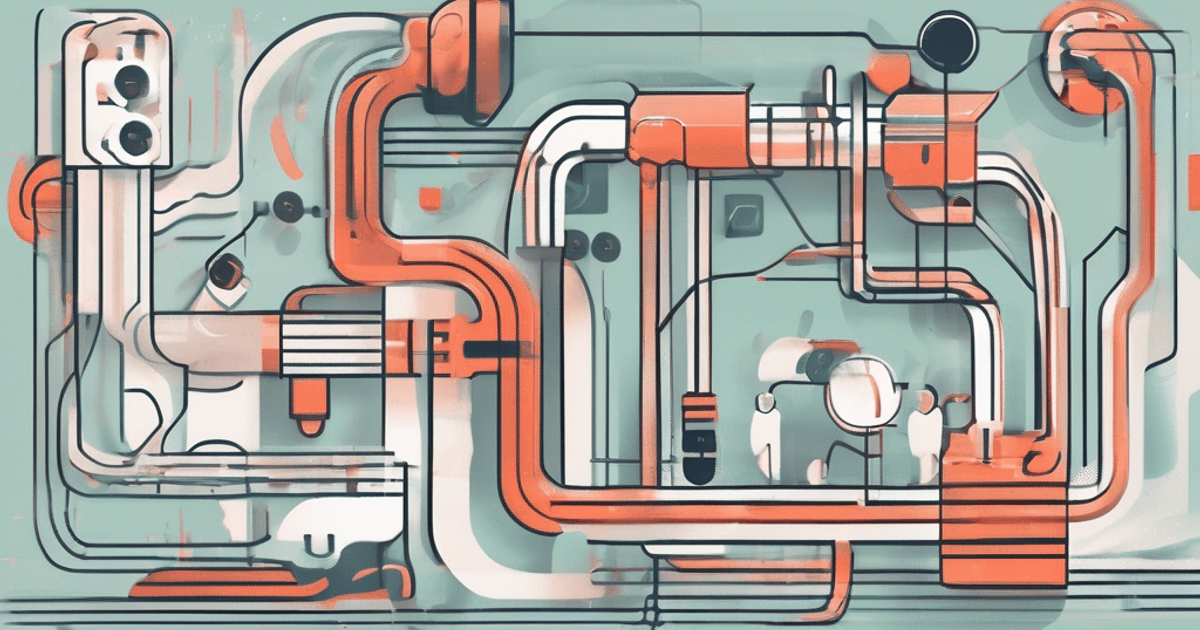There are jobs you can do by hand for years and never notice the drag. For me it was cover images. Each new post: open a design tool, stare at a blank canvas, export a PNG, wire it to the post. Not hard, just enough friction to make publishing feel heavier than it should.
This is a short note about shaving that yak with a tiny toolchain: a context‑aware prompt, an image model, and some guardrails in CI. No heroics—just removing a repeated decision so the writing flows.
Why automate covers
- Consistency: 1200×630 every time. No more odd crops in link unfurls.
- Momentum: publishing shouldn’t wait for “design time”.
- Style: light background, a single accent, abstract shapes. Enough personality, zero fuss.
Over time the manual step was turning into a speed bump. That was the whole motivation.
The bumps along the road (the important part)
I didn’t get it right on the first try. Here are the lessons that actually mattered.
- Model and limits
At first I used Stable Horde for SDXL. It’s great and free, but CI doesn’t love queues. I kept seeing 400/429s in the logs (invalid payload or rate‑limited). Switched to Replicate with an API token; still got rate limits sometimes, but at least the errors were predictable.
- Exact sizing
SDXL likes multiples of 64. I request 1024×576, then downscale to 1200×630 with Sharp. Crisp edges, correct aspect for social cards.
- Slugs vs. filenames
My fallback logic assumed page.slug exactly matched the filename. It didn’t—some posts derive the slug from the permalink. I fixed the template to compute slug-from-permalink and look for /images/covers/{slug}.png. Simple, but that bug cost the most time.
- “Why is it regenerating?”
CI starts from a clean checkout. If covers aren’t in Git, they disappear each run. I added a cache step that restores static/images/covers keyed to content/posts/**/*.md. Now the generator truly skips when a PNG already exists.
- Context in prompts
Pure tags produced vague images. I added a little context: title + ~240 chars of summary (description if present, otherwise a clean slice of the body). Still abstract, just more grounded.
- One‑time resets
Sometimes you do want a full refresh. There’s a manual “Run workflow” input (force_regenerate=true) that bypasses the “file exists” check once. Good for style changes or a model upgrade.
How we decided on AI at all
I tried three options in order:
- Hand‑made banners (historically): high quality, low velocity.
- Programmatic shapes: reliable, but too repetitive.
- AI with guardrails: abstract, brand‑aware, hands‑off once it’s set.
The third option hit the balance. The prompt constrains style; the model supplies variation. It’s not “art direction”, but it serves the post—and that’s the only job here.
The pipeline (nuts and bolts)
-
Script:
scripts/generate-ai-covers.mjs- Scans
content/posts/*.md, pullstags,title, and a short summary. - Prompt (simplified):
Abstract, minimal illustration. Tags: {tags}. Title: {title}. Context: {summary}. Vector‑like, clean geometric shapes, high contrast, brand accent #d64a48 on #f6f7f4. No text.
- Calls Replicate SDXL (model version from a secret), requests 1024×576, saves 1200×630 as
static/images/covers/{slug}.png. - Skips generation if the PNG already exists (unless
FORCE_REGENERATE_COVERS=1).
- Scans
-
Template:
themes/radion/templates/page.html- If a post doesn’t specify a cover, it tries
/images/covers/{slug-from-permalink}.pngand hides the figure if missing.
- If a post doesn’t specify a cover, it tries
-
CI:
.github/workflows/deploy.yml- Restores a covers cache before generation; saves it after.
- Optional manual input
force_regeneratefor a one‑time refresh.
What GitHub Actions brings
The boring kind of power: reliability.
- Every run restores the previous covers, generates only what’s missing, and embeds without a front‑matter tweak.
- When rate‑limited, the post still publishes—missing images pick up on the next run.
- A small verification stage lists the covers in
public/images/coversand checks that posts actually reference them.
Closing the loop
This wasn’t about making the site “AI‑powered”. It was about removing a tiny friction point that kept breaking the flow. The rule of thumb I keep coming back to: automate anything that steals attention from writing. Covers were stealing attention. Now they aren’t.
And if the art ever needs a new feel? I flip the model or tweak the prompt, hit “Run workflow”, and let the pipeline repaint the edges while I get back to words.
